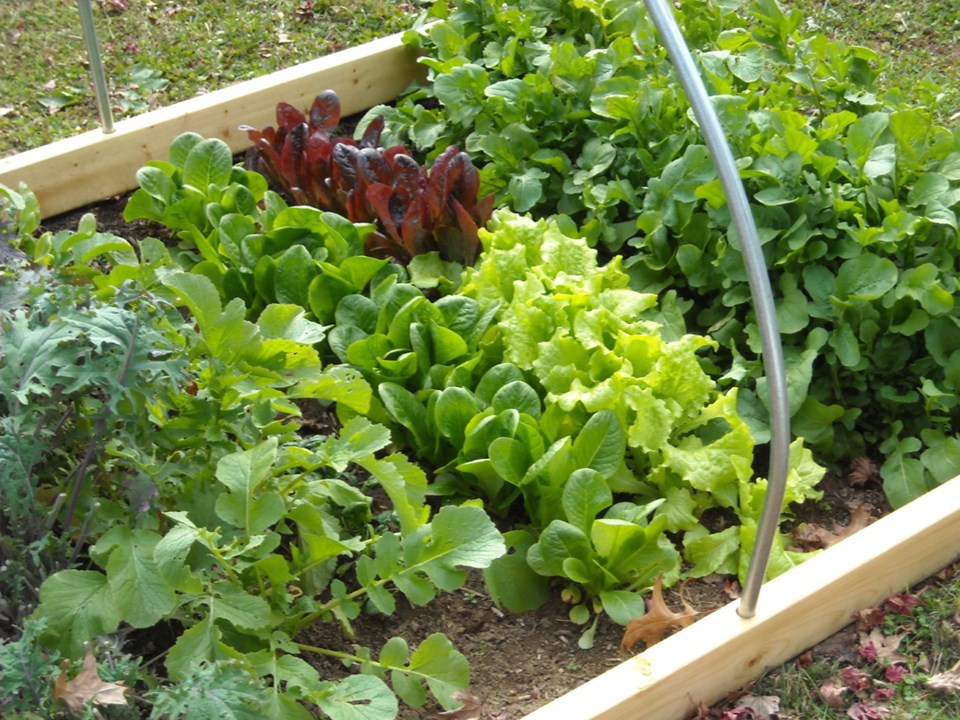The following column was submitted to the Tri-City News from Brian Minter — master gardener, best-selling author, Order of Canada recipient and co-owner of Minter Country Garden Store.
Our continuing, winter-like weather, with the odd hiccup of one or two warmer days, is driving many gardeners to distraction.
The good news is there is still lots of time to enjoy seasonal vegetables and annual colour.
We just need a lot more patience than usual.
A little secret on timing your plantings — night temperatures are the key.
When we get some reasonably consistent night temperatures of around 8 to 10 C, our plants will settle in quickly and take off, as opposed to sitting there, turning blue and going backwards.
There are many hardy plants that can tolerate the cool, vacillating weather and still perform OK, but waiting for the eventual warmer weather is best.
For the vegetable garden, here’s a list of cool, early starters: broad beans, early varieties of brassicas (broccoli, cabbage and cauliflower), kale, endive, kohlrabi, leeks, mustard greens, swiss chard, lettuce, onions, peas, radishes and early potatoes.
The following perennial culinary herbs can be planted early for a great start: chives, coriander, marjoram, oregano, rosemary, winter savoury, mints, thymes and sorrel.
Perennial vegetables and fruits, such as asparagus, Jerusalem artichokes, raspberries, strawberries and rhubarb, can be planted or transplanted if they are bare root or grown in containers.
Honestly, it’s far better to wait for consistent warm weather and night temperatures of 10 C for any heat-loving vegetables, like beans, mid-season brassicas, beets, carrots, celery, celeriac, corn, cucumbers, eggplants, okras, parsnips and turnips.
Don’t even think about planting peppers, squash, tomatoes, watermelon and cantaloupe until the end of May.
In the colour department, the best cool colour plants are calendulas, dianthus, dusty miller, lobelia, mimulas, marguerites, daisies, nasturtiums, nemesia, pansies, osteospermum, sweet peas, violas, snapdragons and stocks.
Heat-loving flowers that thrive in hot, dry conditions and must have consistent nighttime temperatures of at least 10 C, like we’ll have in mid to late May, include fibrous and tuberous begonias, celosia, coleus, dahlias, gazanias, heliotrope, gomphrena, geraniums, impatiens, marigolds, nicotiana, portulaca, rudbeckia, salvia and zinnias.
You can certainly challenge Mother Nature by using raised beds, protective fences and walls, cloches, Remay cloth, cold frames and greenhouses, but as a rule, warmer temperatures and drier conditions are the secrets to success.
April weather can be very fickle where a warm couple of days can be followed by cool, wet weather.
For success in our gardens, it’s wise to wait until we get at least a week of consistent temperatures to allow plants to establish roots so they can tolerate cool, wet conditions much more easily until we get our warm late spring and summer weather.
I know it’s tempting to pick up our favourite heat-loving vegetables and flowers when you see them in stores already, but please avoid the temptation until we get the right growing conditions.





